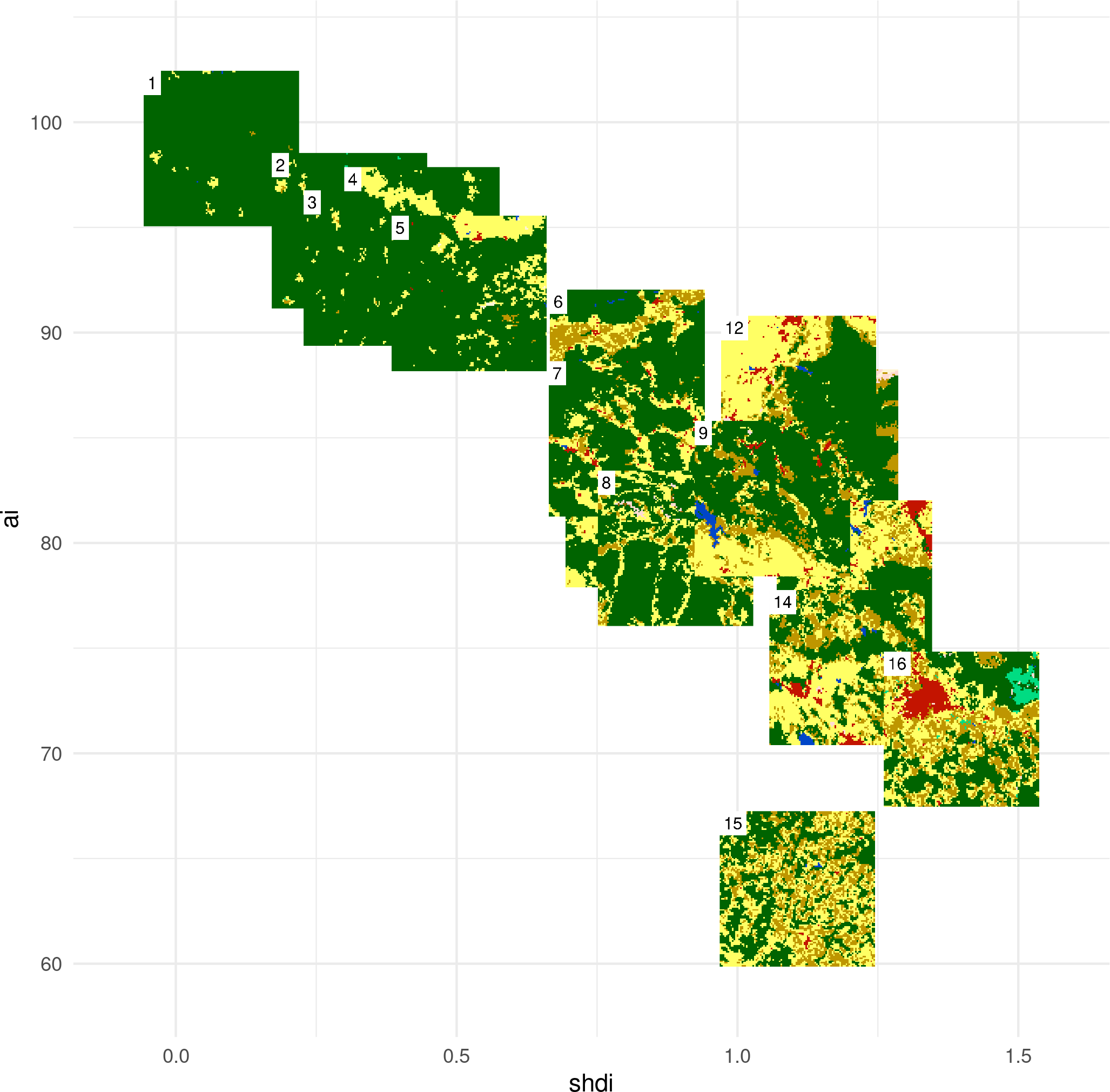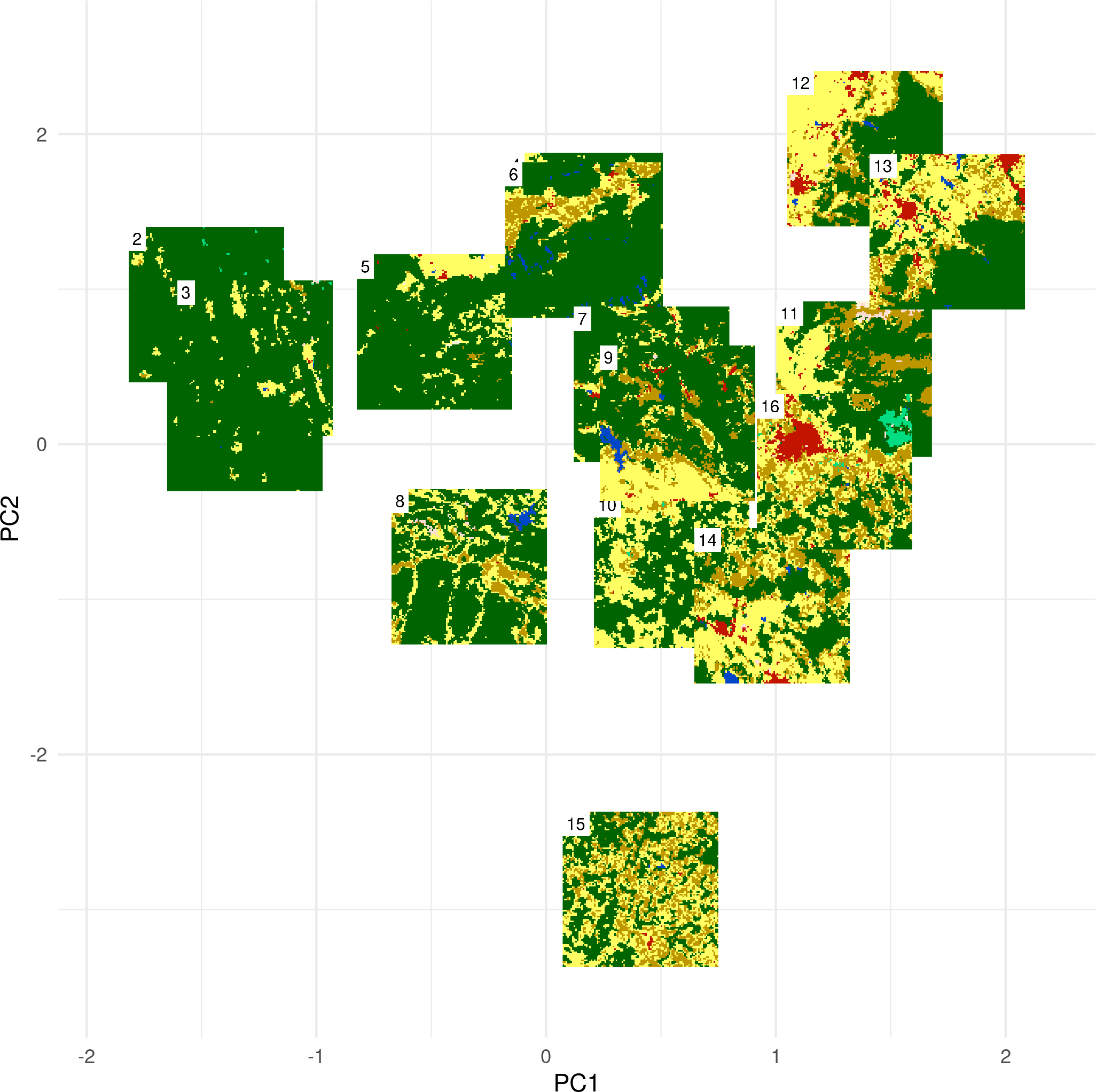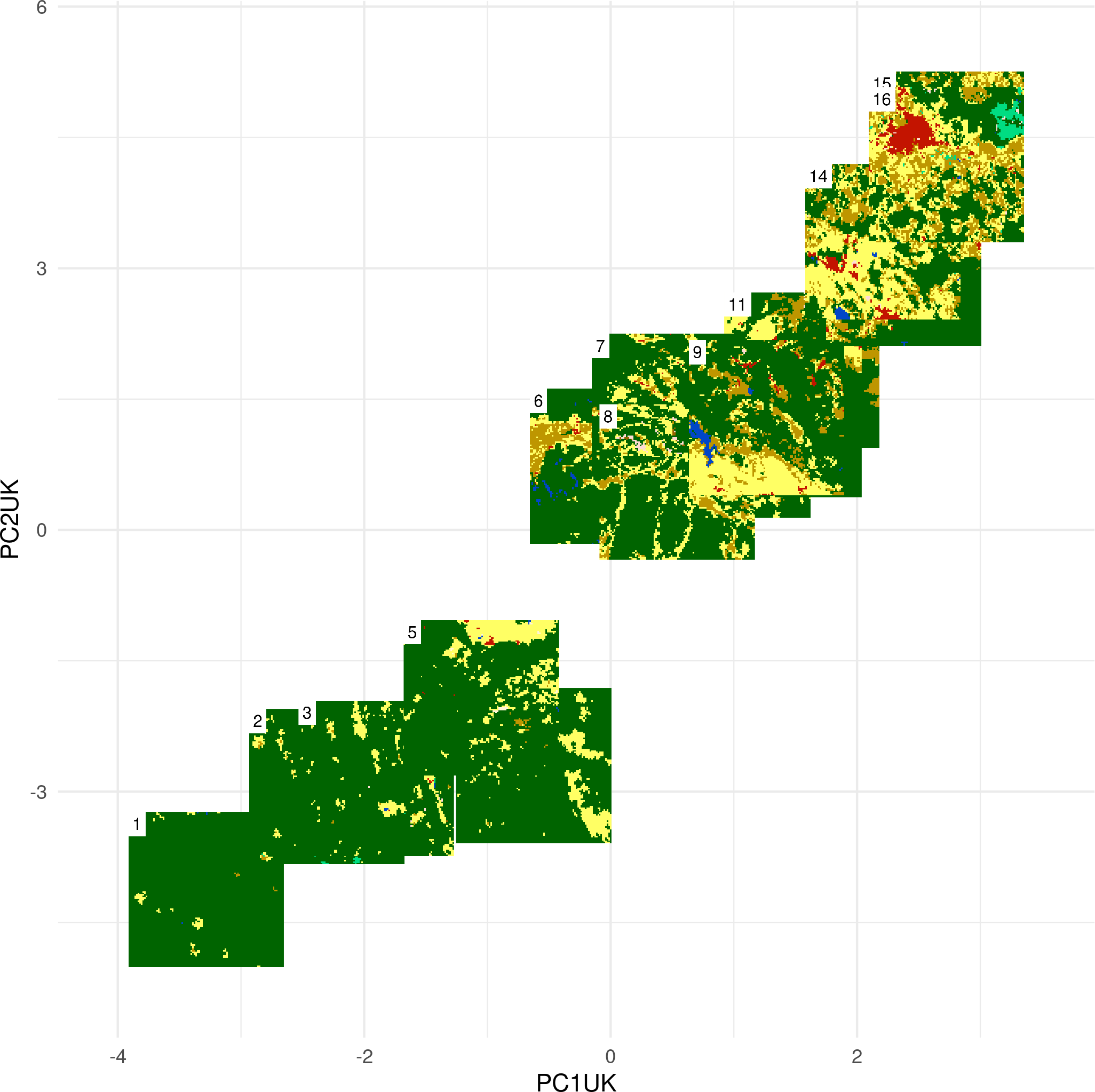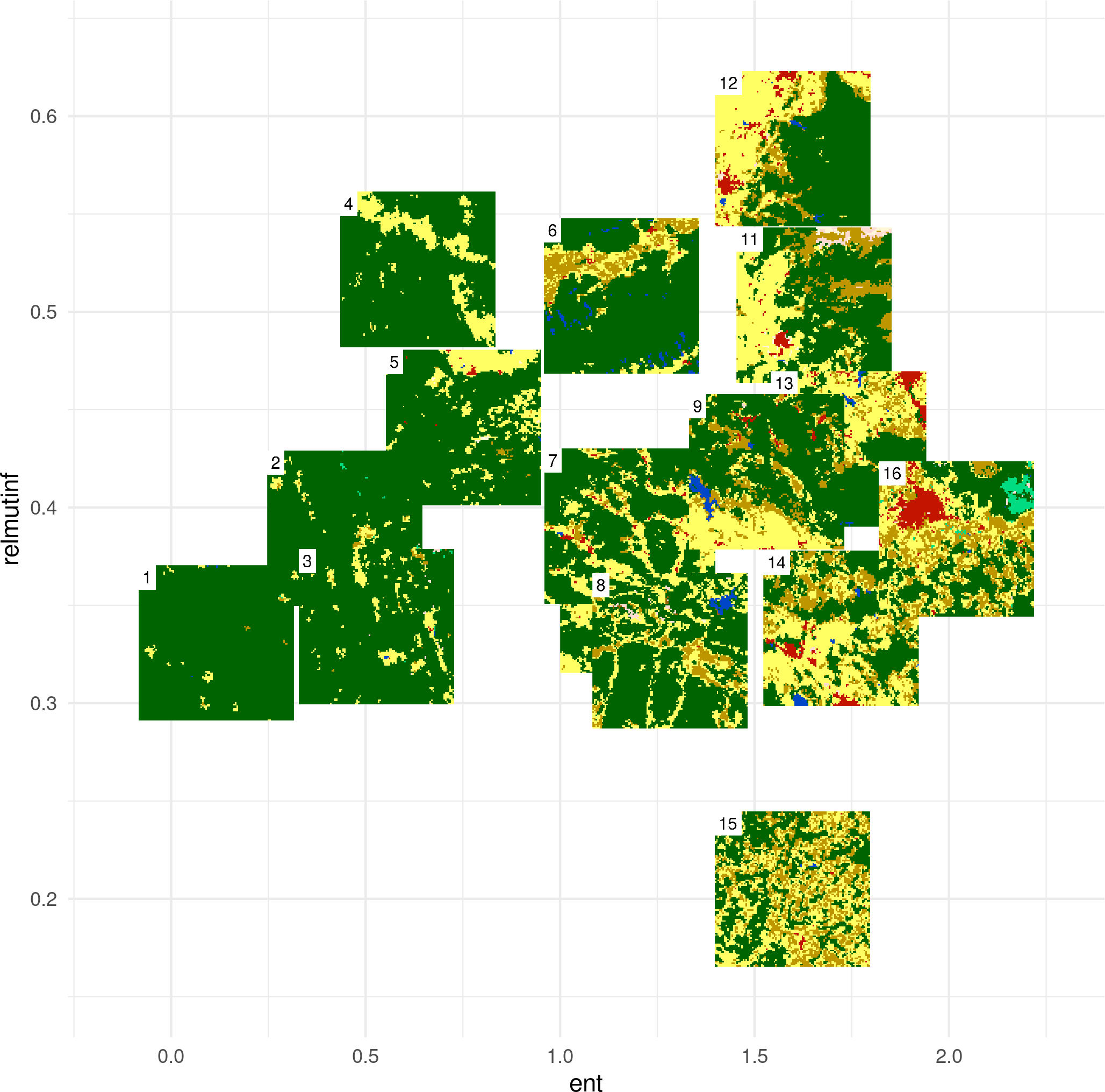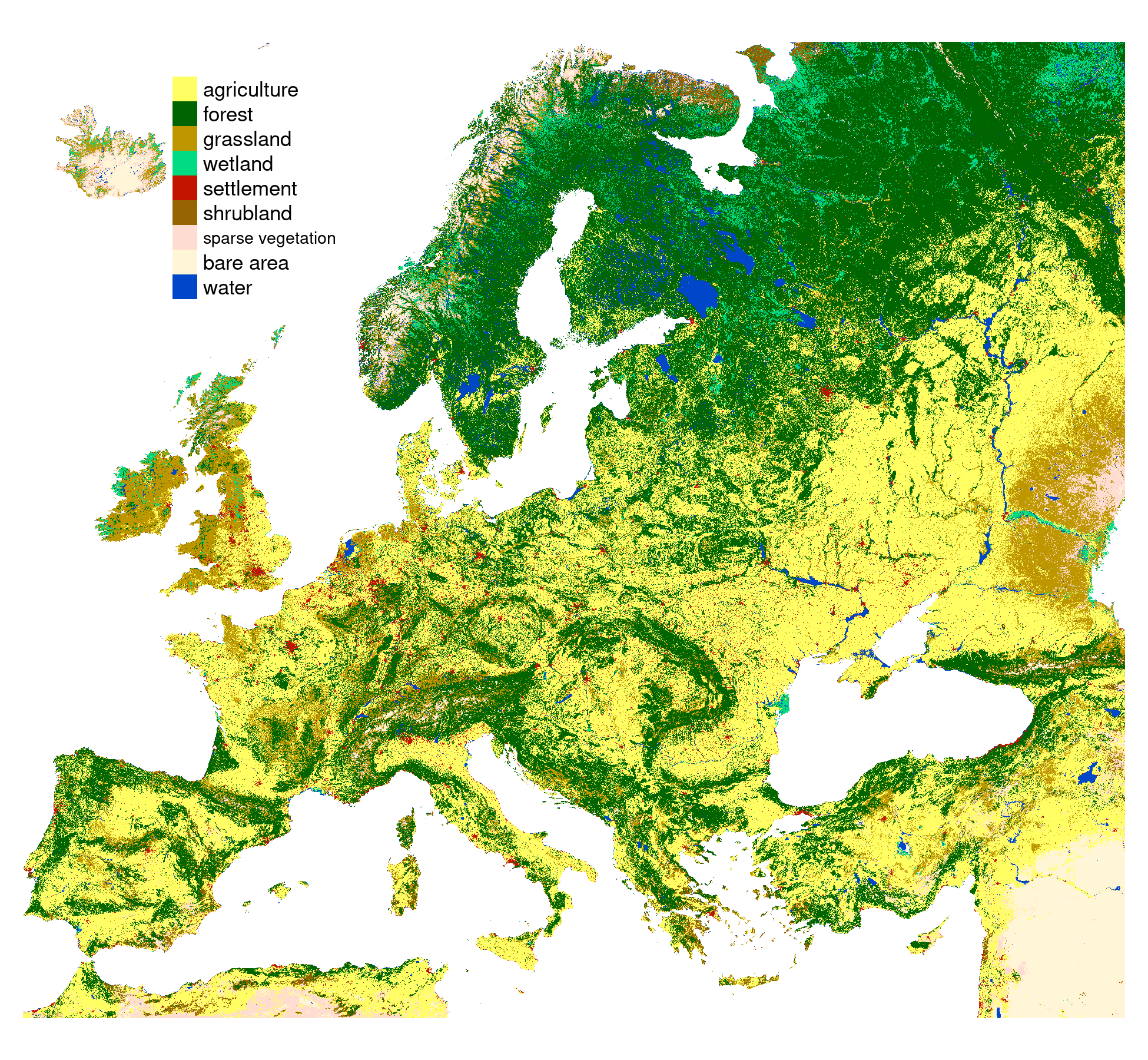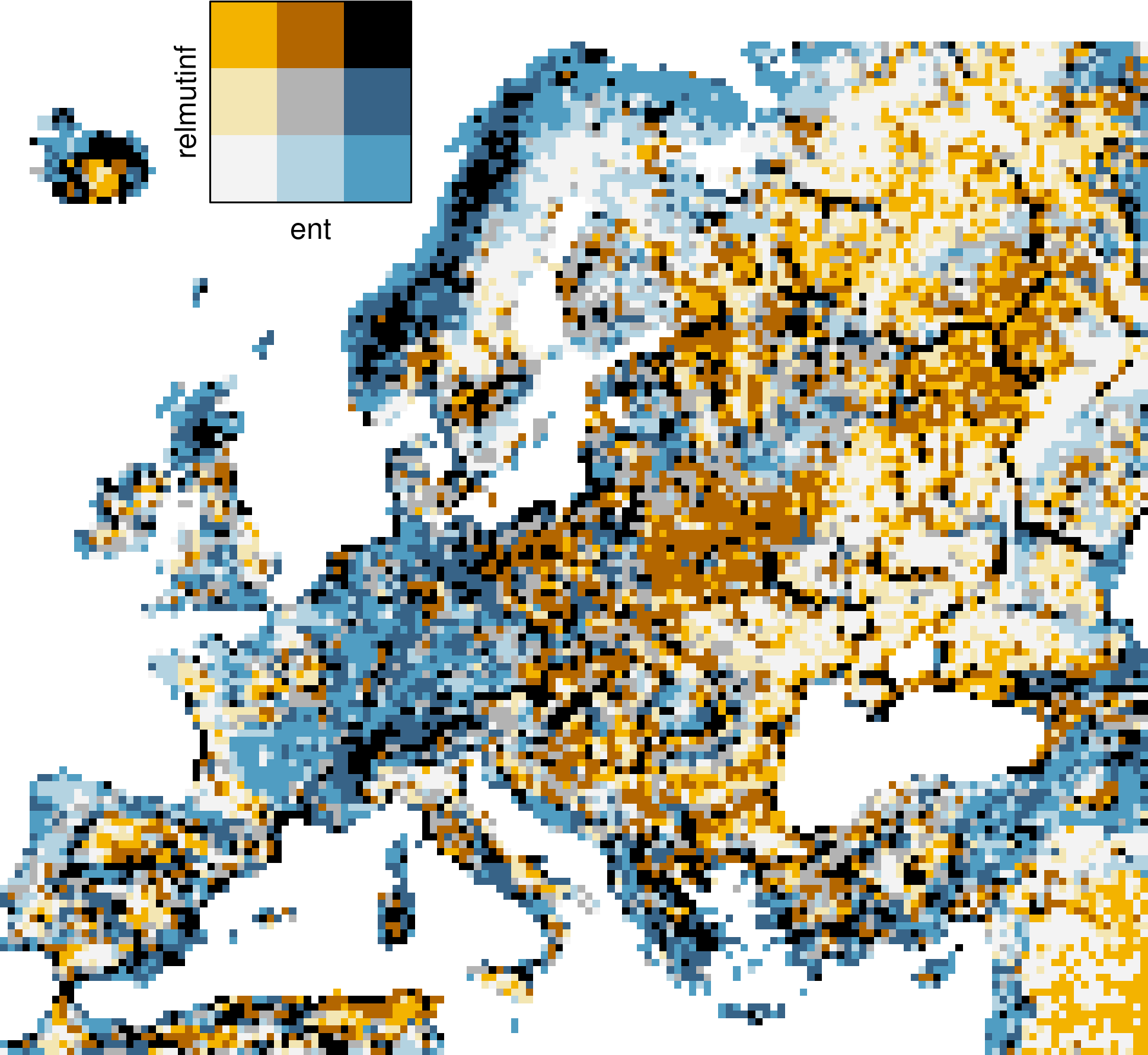Landscape Patterns
How to discover and to describe
Chris Reudenbach
Landscape Metrics
- Problem no. 1: which of the hundreds of spatial metrics should we choose?
- Problem no. 2: many landscape metrics are highly correlated…
Possible Approach - PCA of type samples of landscape metrics
We performed a principal component analysis (PCA) using 17 landscape-level metrics:
PCA of landscape metrics
- First two principal components explained ~71% of variability
PCA of landscapes
The result allows to distinguish between:
- simple and complex rasters (left<->right)
- agmented and consolidated rasters (bottom<->top)
However, there are still some problems here…
PCA of landscapes
- We performed a second PCA using data from the United Kingdom only
- Next, we predicted the results on the data for the whole Europe
PCA of landscapes
Issues with the PCA approach:
- Each new dataset requires recalculation of both, landscape metrics and principal components analysis (PCA)
- Highly correlated landscape metrics are used
- PCA results interpretation is not straightforward
IT metrics
- Five information theory metrics based on a co-occurrence matrix exist (Nowosad and Stepinski, 2019, https://doi.org/10.1007/s10980-019-00830-x)
- Marginal entropy [H(x)] - diversity (composition) of spatial categories - from monothematic patterns to multithematic patterns
- Relative mutual information [U] - clumpiness (configuration) of spatial categories from fragmented patterns to consolidated patterns)
- H(x) and U are uncorrelated
IT metrics
2D parametrization of categorical rasters’ configurations based on two weakly correlated IT metrics groups similar patterns into distinct regions of the parameters space
IT metrics final results
Exercises
- The marginal entropy and relative mutual information can be calculated using the landscapemetrics package’s functions:
lsm_l_ent()andlsm_l_relmutinf(). Calculate both of these metrics for theexdata/lc_small.tifraster. - Read the
exdata/lc_europe.tifraster usingrast() from the **terra** package and theexdata/polygons.gpkgvector data using theread_sf()function from the **sf** package. Calculate the marginal entropy and relative mutual information for each polygon using thesample_lsm()` function. - Join the calculated values with the polygons (see https://r-spatialecology.github.io/landscapemetrics/articles/irregular_areas.html for more details).
- Calculate SHDI and AI for the polygons. Compare the values of SHDI and AI with the marginal entropy and relative mutual information (e.g., using a scatterplot or by calculating the correlation coefficient). Are the results similar?
- (Extra) Create your own polygonal grid using
st_make_grid()function from the sf package for the area from theexdata/polygons.gpkgfile. Calculate the marginal entropy and relative mutual information for each square using the sample_lsm() function. Visualize the results.
IT metrics
These metrics still leave some questions open…
- Relative mutual information is a result of dividing mutual information by entropy. What to do when the entropy is zero?
- How to incorporate the meaning of categories into the analysis?
<gisma 2023>
PCA 1
PCA 2
PCA 2
PCA 1
PCA 2
PCA 1 PCA 2 UK EU
Entropy
Relative mutual information
Land cover data
Parametrization of two IT metrics
Parametrization of two IT metrics
